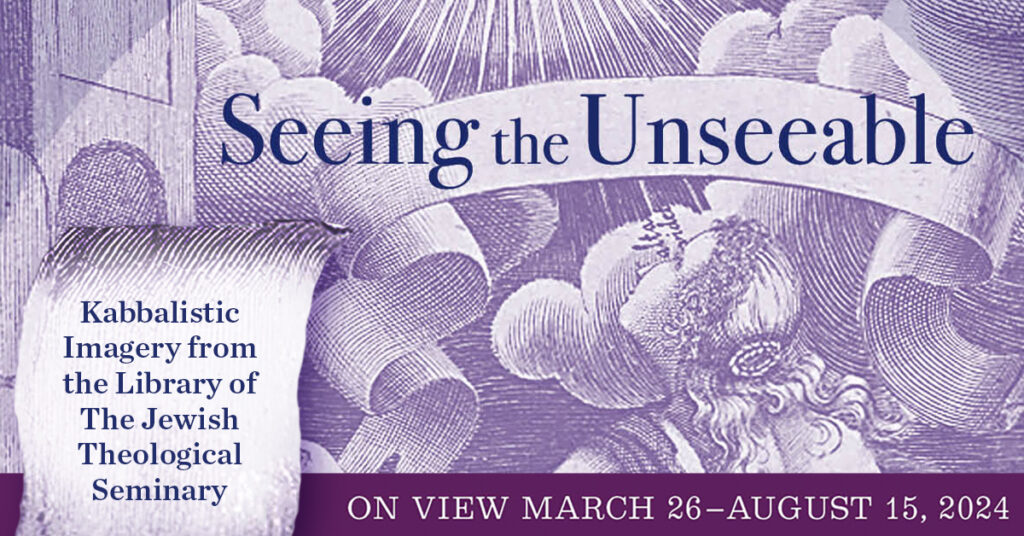Seeing the Unseeable: Kabbalistic Imagery from The Library of the Jewish Theological Seminary


March 26 – August 15, 2024
The spread of classical philosophy among Jews in the medieval period posed a significant challenge to traditional conceptions of divinity. While the God of the bible and rabbinic literature was a personal, anthropomorphic, and specifically Jewish God, the God of the philosophers was abstract, impersonal, and universal. To bridge the increasingly abstract and transcendent God of the philosophers with the personal and anthropomorphic God of Jewish tradition, the Kabbalists elaborated the doctrine of the sefirot, the ten divine attributes that emanated from within God and through which God interacts with creation.
According to the Zohar, the classic work of the theosophical Kabbalah, despite God’s transcendence, God can be apprehended via the “gates of the imagination.” We invite you to enter these gates and explore the visual worlds of the Kabbalah included in our exhibition. Whether in their theoretical treatises, diagrammatic scrolls, devotional plaques, or magical amulets, images were central to how Kabbalists presented their complex metaphysical ideas, depicted invisible realities, cultivated religious experience, and manifested divine power.
Multimedia
Seeing the Unseeable Opening Lecture
The Book of Raziel: Practical Kabbalah
Ilan: Kabbalistic Scroll
Grimoire: A Jewish Book of Demons
Delve deeper into the development of Jewish mysticism in “Exploring Kabbalah,“ a JTS podcast with Dr. Eitan Fishbane, professor of Jewish Thought at JTS.



